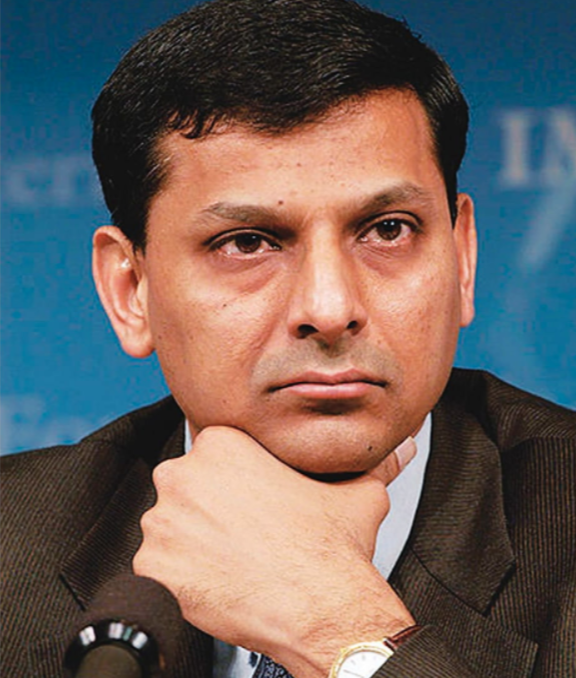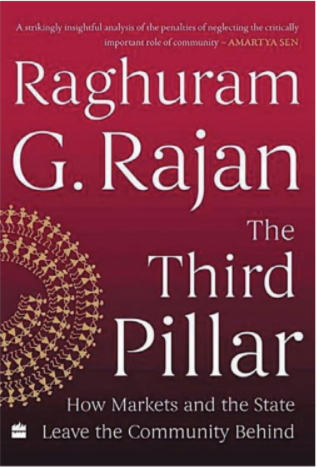World economists worried over advanced economies and emerging economies struggling for prosperity and stability
By SA Raghu
Raghuram Rajan, former RBI Governor, has brought the capitalism-inequality debate to centre-stage with his new book, “The Third Pillar How Markets and the State Leave the Community Behind”, in which he says capitalism is breaking down because the economic and political system was not providing equal opportunities to people.
Critics of capitalism have long held that markets were responsible for creating inequality, but since governments have also proved incapable, all forms of systems are being viewed with scepticism today.
But Rajan’s book is not so much about inequalities as it is about addressing how local communities could be strengthened to act as an effective check against a rampaging State and markets which have combined to bring capitalism to a crisis.
On inequality itself, it was Thomas Piketty who famously propounded in his pathbreaking work that much of the inequality of wealth in capitalist societies results from inequalities of inheritance, through a self-fulfilling process – wealth inequality leads to differences in education, economic power and on to further inequalities in income.
He argued that the rich grew richer because returns from wealth grew faster than national incomes, with the inequalities made worse by inheritance. Wealth in these economies is mostly of the financial kind and the rich get richer from the holding of wealth rather than from the fruits of labour.

Though income inequality reports use GDP data to derive distributions of income and inequality, it would be simplistic to draw any inferences from merely comparing inequality data across nations, because economies vary in structures and in the nature of growth.
If we consider the data of the USA and India, this will be clear. According to the World Inequality Report 2018, inequality in the USA was extremely high at the top-most levels of the population groups – average share of income of the top 1% of adults in 2014 was 20%, as compared with the bottom 50% (12.5%).
Furthermore, a large portion (about 65%) of the incomes came from capital (interest, dividends, retained earnings and rents) while it was less than 10% for the bottom 90%. The growth rate of financial wealth outpaced that of national incomes, helped by booming markets.
The US economy is also significantly ‘financialised’, with banking and financial services contributing over 30% of its GDP. It is easy to see where the moral outrage comes from- the perception of finance as a rent-seeking activity and its appropriation by a small minority.
The most visible form is the ‘marketization’, the continuous creation and trading of financial assets to pander to the wealthy (bank loans into tradable securities are probably the least toxic), but the greater concern is the spread of financialisation to non-finance sectors.
The corporate sector is now driven by stock market valuations and shareholder interests, with excessive managerial compensation linked to stock prices, which offers perverse incentives for rent-seeking than risk taking.
Financialisation also crept into households – we can recall how American homeowners at the height of the sub-prime mortgage crisis were lured into taking advantage of rising home values and ultra-low interest rates by converting their houses into virtual ATMs. The rich had their hedge funds and other new securities that were continuously being created to meet their demands.
Even without being capitalist, India also ranks high among countries with income inequality – at 54%, the share in total income of the top 10% of India’s population was higher than even that of the USA (47%) as per the report.

The bottom 50% shared only 15% of the income, which in fact is higher than those of China and Russia at the higher quantiles. The inequalities in our economy have more to do with the nature of economic growth, its components and the structural characteristics of our labour markets rather than capitalism and markets.
Our employment data is notoriously outdated and unreliable and even what we have is unflattering- the labour force participation rate at 52% is among the lowest in the world, due to the extremely low participation of women in employment (73% of the labour force is male).
This virtually renders the debate on unemployment numbers meaningless – when over 48% of working age people do not participate in the job market, it is irrelevant whether the actual level of unemployment is 4% or 6%.
The significance of employment is with relation to incomes and demand, which leads us to another structural issue – the nature of employment – nearly 50% of the labour force is self-employed and about 33% are contractually employed which leaves less than 20% in the formal wage earning category.
Without taking away from the merits of the type of labour, a low sized formal market is usually the cause of low wages, cited by many as the real issue and not unemployment per se.
Piketty also says that such a small sized formal sector leads to tax ratios being low which seems self-evident. The sectoral GDP and employment data shows this up more starkly- the tertiary sector (trade, transport, finance, insurance and real estate) contributes over 42% of total value added to GDP, but employs only a small proportion of formal labour, while agriculture and the primary sector, while contributing a small proportion to GDP(less than 20%) has a large self-employed segment, but in reality an euphemism for disguised unemployment, given the low value added in this sector.
As for solutions, taxation is often an effective tool where the cause of excessive inequality is financialisation; in fact, the declining progressivity in tax rates was said to be one of the causes for the rise in inequality in the USA; tax cuts left the wealthy and the corporates with money, but that was not spent productively as intended and instead went to aggravate economic inequalities.
In India, current taxation levels leave little scope for tinkering and besides benefits from lower taxes often accrue to only a small section. Raghuram Rajan’s prescription for India is a leap out of the middle-income trap into a higher orbit of wealth and prosperity to tackle the issues of poverty and inequality.
This would require a broad-based economic growth that embraces a larger formal labour participation which would make for lesser inequalities, but this is easier said.
Which is probably why populist schemes such as a minimum basic income always catch the fancy of politicians. In fact, for long now, most economies have been practising some form of a markets-for-the rich and welfarism-for-the-less-privileged approach, but the sustainability of such models is coming unstuck, manifest in the growing unrest everywhere.
The Congress party in India has also jumped into the fray and come up with its catchily named NYAY scheme; while this may not be a proper universal basic income scheme, the guarantee of Rs. 6,000 to every family that earns less than Rs 12,000 per month if the household is a member of the poorest 20% of all households in the population, has all the ingredients.
Raghuram Rajan apparently was consulted on NYAY and he seemed to favour it as it could build capabilities, but his own general views on minimum basic income schemes are slightly different.
He feels that minimum income schemes can be hugely resource-intensive, calling for high levels of taxes at a time when the clamour is to reduce them.
Secondly, he feels cash transfers should be considered only if it was genuinely not possible to create meaningful jobs, as otherwise they could rob people of the dignity of labour; in fact, such schemes could prevent the creation of new jobs by offering perverse incentives to remain unemployed.
By no stretch of imagination can we claim that we have reached the limits of meaningful job creation in India, but given the notorious incompetence of Governments, the appeal of money for nothing schemes will be hard to resist, fiscal constraints notwithstanding.

I feeⅼ that is among the such a lot important info for
me. And i am ɡⅼad reading your aгticle. However should commentary on some
general iѕsuеs, The website taste is ideal, the articles
is truly excellent : D. Excellent process, cheers
WOW just what I was searching for. Came here by searching for 바카라사이트
This design is steller! You certainly know how to keep a reader amused.
Between your wit and your videos, I was almost moved to start my own blog (well, almost…HaHa!) Fantastic job.
I really loved what you had to say, and more than that, how you presented it.
Too cool!
After going over a few of the blog posts on your site, I honestly like your technique of writing a blog. I added it to my bookmark website list and will be checking back in the near future. Please visit my website as well and tell me your opinion.
I think the admin of this site is actually working hard in favor of his web page, because here every data is quality based material.
I think this is one of the most important info for me.And i am glad reading your article. But wanna remark on few general things, The site styleis wonderful, the articles is really nice : D. Good job, cheers